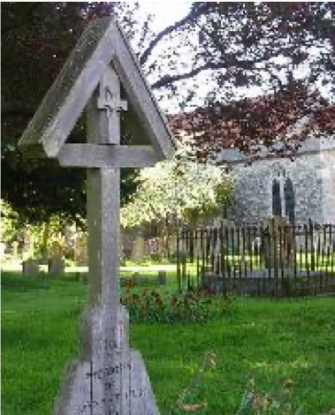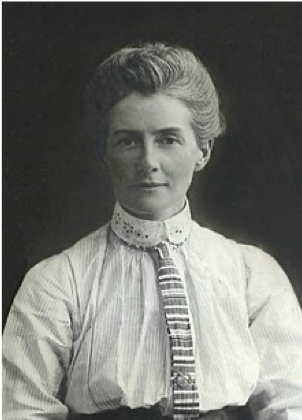Illness and Disease
CHOLERA IN EAST FARLEIGH 1849
At hop picking time, many people came to East Farleigh to pick the hops. Large numbers came and lived in squalid, overcrowded barns, sheds and hoppers huts. Water was drawn from a well. There had been an outbreak in Tonbridge a few weeks earlier and it is thought that the well may have been contaminated by river water. A hole in the ground served as a toilet. It was inevitable that the well water became contaminated with both animal and human waste. The food provided for them was of poor quality. It was not surprising that there was a cholera outbreak. A Dr Plomley from the Maidstone Union at Coxheath (the Workhouse, that was situated to the south of Coxheath church) took charge. The vicar Rev Henry Wilberforce, opened the school, next to the church, as a hospital.
45 people died in the outbreak, 43 being buried in a communal grave in the churchyard. A wooden cross was erected to commemorate the deaths.

TYPHOID OUT-BREAK IN 1897
Typhoid used to be endemic in Britain, with occasional outbreaks. There was a significant out-break locally in 1897 when there were 1,900 recorded cases of which 132 died. Many of the dead were buried in Maidstone Cemetery.
The Medical Officer of Health was instructed to procure doctors and nursed from London to assist the local doctors and nurses.
A contingent of nurses was sent down from the London Hospital. One of them being Edith Cavell, a probationer with experience of working in a fever hospital. One of the doctors was Dr Washburn, a bacteriologist.
Fortunately only 4 nurses developed the disease and were nursed back to health at the West Kent Hospital in Marsham Street.
In gratitude to the Nurses, the Mayor of Maidstone, gave all the nurses a Special Medal.

To prevent the spread, laundry from households with the disease was take to the grounds of Fant Lane hospital where a special laundry has been set up. After washing, the laundry was disinfected with high pressure steam. Many schools were turned into hospitals.
The Inspector of Nuisances was responsible for disinfecting and fumigating houses where there had been cases of typhoid. Disinfected by scrubbing with carbolic and fumigated by burning sulphur. Wall paper was stripped off and walls and ceilings whitewashed.
The source of the infection was known to be the water supply from Barming Pumping Station - The Egyptian looking building by the bridge. Water was collected from the springs upstream that are along the river banks. It was reported in the BMJ (British Medical Journal) that the water from the springs were tested for contamination:
- The Ewell Spring was found to be clean. There was nothing along the Ewell Stream to contaminate it and the no one in Ewell Manor, who drew water from the Stream, had become ill.
- The water from the spring in Tutsham field was, however, polluted. The spring discharges below the area of the field where the hoppers were housed, with no proper sanitation.
- The Spring in Tutsham orchard was clean.
- The water from springs on the north side of the river, along the railway line was also not contaminated.
From this is was presumed a hop picker earlier in the year had brought Typhoid to Tutsham!
The water company in an attempt to save money, was remiss in not testing the water coming to the pumping station. The council was also criticised for not maintaining the sewers and drains in the town.
Hoppers came to the huts in Tutsham field for many years after the epidemic, was the sanitation improved?




